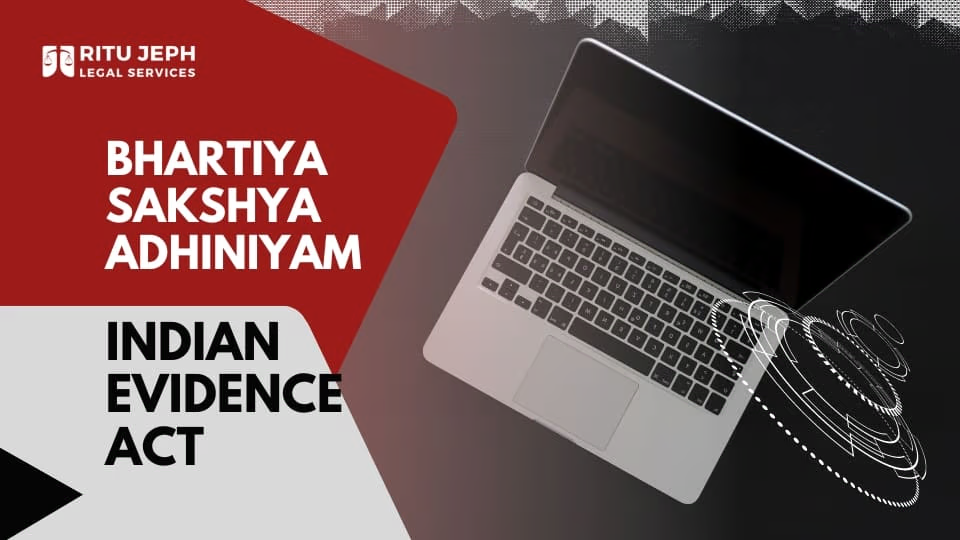Book Appointment Now

How E-Evidence Under Bharatiya Sakshya Adhiniyam Impacts Legal Proceedings
Learn about E-Evidence Under Bharatiya Sakshya Adhiniyam, India's updated law governing the admissibility of digital evidence in courts, ensuring fair and effective legal proceedings in the digital age.
E-Evidence Under Bharatiya Sakshya Adhiniyam (BSA) has revolutionized the way Indian courts handle digital evidence. With the rise in cybercrimes and digital transactions, this updated law is crucial for ensuring that electronic records such as emails, text messages, and social media posts are properly admitted in legal proceedings.
The law outlines strict guidelines for the admissibility, certification, and chain of custody of e-evidence, ensuring that only authentic and reliable digital information is used in court. By implementing these provisions, E-Evidence Under Bharatiya Sakshya Adhiniyam (BSA) aims to bridge the gap between traditional evidence and the growing prevalence of electronic data, making the Indian legal system more efficient in addressing modern challenges. Understanding these changes is vital for anyone involved in legal matters today.
With the rise of technology, the Indian legal system has adapted to address the complexities of electronic evidence. The new Bharatiya Sakshya Adhiniyam (BSA) includes crucial provisions regarding the admissibility and management of e-evidence. Let’s break it down to understand how it impacts legal proceedings in India.
What is E-Evidence?
E-evidence, or electronic evidence, refers to any information stored or transmitted in digital form that can be used as evidence in court. This includes emails, social media posts, text messages, digital contracts, and more. As more crimes are committed online, the legal system needs robust ways to handle such evidence.
ALSO Read: Can the Prevention of Unfair Means Act Prevent Paper Leaks?
E-Evidence Under Bharatiya Sakshya Adhiniyam
The Bharatiya Sakshya Adhiniyam (BSA) is India’s updated law governing evidence in legal cases. A significant aspect of this law is how it handles e-evidence. Courts must now evaluate whether digital information is authentic and relevant before accepting it as evidence. The BSA provides guidelines on how electronic records should be produced, verified, and admitted in court.
Key Points of E-Evidence Under Bharatiya Sakshya Adhiniyam:
- Admissibility of E-Evidence: The BSA recognizes electronic records as valid evidence, provided they meet certain criteria, such as being produced from a reliable source and being untampered. This ensures that e-evidence is handled with the same seriousness as physical evidence.
- Chain of Custody: Maintaining a clear chain of custody for e-evidence is crucial. The BSA emphasizes that digital evidence must be traced from its source to the courtroom to ensure its integrity.
- Certification of E-Evidence: Under the new rules, any electronic evidence presented must be accompanied by a certificate that verifies its authenticity. This certificate must be signed by a responsible person who can vouch for the system’s accuracy in producing the evidence.
- Challenges to E-Evidence: Parties involved in a case have the right to challenge the validity of electronic evidence. The BSA allows for cross-examination of the persons responsible for collecting and certifying the e-evidence.
Importance of E-Evidence in Modern Trials
In today’s world, where much of our communication and transactions occur online, e-evidence plays a critical role in court proceedings. Digital records often provide vital proof in cases ranging from cybercrimes to business disputes. E-Evidence Under Bharatiya Sakshya Adhiniyam (BSA) gives courts the tools they need to handle these new types of evidence effectively.
ALSO READ: Understanding Image Copyright Infringement in India and Your Rights
Conclusion
The introduction of the e-evidence framework under Bharatiya Sakshya Adhiniyam (BSA) marks a significant step forward for the Indian judicial system. By establishing clear rules for the handling and admissibility of electronic evidence, the law ensures that justice can be served in a digital age. Understanding how e-evidence works under this new law is essential for anyone involved in legal proceedings in India, as it can make or break a case.
By adopting these measures, courts can ensure the integrity and reliability of digital information presented during trials, helping to bridge the gap between traditional and modern forms of evidence.



